Tomography
Type of resources
Topics
Keywords
Contact for the resource
Provided by
Years
Formats
Representation types
Update frequencies
-
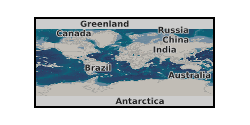
Table S1.xlsx is Table S1, which contains 2D measurements of cell clusters used in Fig. 5 (this is also available from the publisher's website). The folders SMNH X 4447, SMNH X 5331 and SMNH X 5357 contain data from X-ray tomographic analyses of fossils figured in the paper: For SMNH X 5331 (the conical fossil that is the focus of the paper) there are two zip archives: 1. Slice data and Avizo files, containing: - Slice data: the raw scan data (.tif image stack) - Label files for cell clusters and individual cells: Avizo projects (.hx) containing the labels and the files required to open the project file. The cluster labels are based on a downsampled version of the data which is included here as slice data (.tif image stack). Voxel sizes for this file are 0.325 x 1.3 x 0.325 micrometers. 2. Working files, containing: - Surface models: .ply files for clusters and individual cells. - Segmented stacks: the label files as .tif stacks (voxel sizes as per slice data: 0.325 x 0.325 x 0.325 micrometres (cell labels); 0.325 x 1.3 x 0.325 micrometers (cluster labels)). SMNH X 4447 and SMNH X 5357 (two specimens figured for comparison) there is: - Slice data: zip archives of the raw scan data (.tif image stack). The individual slices (.tif images) can be viewed with standard graphics software, and the datasets can be studied in 3D using tomographic reconstruction software such as Avizo (www.vsg3d.com/), Spiers (www.spiers-software.org/), VG Studio Max (www.volumegraphics.com) etc. The Avizo project and label files (.hx and .am files) require Avizo software (www.vsg3d.com/) to be opened. The 3D models (.ply files) are widely compatible with 3D freeware packages such as MeshLab (http://meshlab.sourceforge.net/) or Blender (https://www.blender.org/), or with proprietary software, e.g. Avizo (www.vsg3d.com/), Geomagic (http://www.geomagic.com/en/), Mimics (http://biomedical.materialise.com/mimics). The files relate to the following publication: Cunningham, J. A., Vargas, K., Marone, F., Bengtson, S. & Donoghue, P. C. J. 2016. A multicellular organism with embedded cell clusters from the Ediacaran Weng'an biota (Doushantuo Formation, South China). Evolution & Development
-
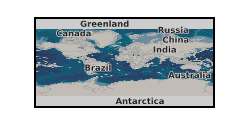
The data are from X-ray tomographic analyses of tubular fossils. All scans were carried out using Synchrotron Radiation X-ray Tomographic Microscopy (SRXTM) except for specimen SMNH X 5324 which was also analysed using Ptychographic X-ray Computed Tomography (PXCT). The methods are described in the paper. The data consist of a stacked series of .tif files that represent maps of X-ray attenuation. The individual slices can be viewed with standard graphics software. The datasets can be studied in 3D using tomographic reconstruction software such as Avizo (www.vsg3d.com/), Spiers (www.spiers-software.org/), VG Studio Max (www.volumegraphics.com) etc. The voxel size, which is needed for scale calculations, varies between datasets and is given below. Some datasets consist of two 'blocks' of data, with slices named [specimen name]_B1 and [specimen name]_B2. These are placed in the same folder and follow on directly from one another. They can be opened together as a single dataset. The files relate to the following publication: Cunningham, J. A., Vargas, K., Liu, P., Belivanova, V., Marone, F., Martinez-Perez, C., Guizar-Sicairos, M., Holler, M., Bengtson, S. & Donoghue, P. C. J. 2015. Critical appraisal of tubular putative eumetazoans from the Ediacaran Weng'an Doushantuo biota. Proceedings of the Royal Society Series B: Biological Sciences.
-
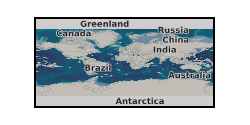
The datasets contain 416 time-resolved synchrotron X-ray micro-tomographic images (grey-scale and segmented) of multiphase (brine-oil) fluid flow in a carbonate rock sample at reservoir conditions. The tomographic images were acquired at a voxel-resolution of 3.28 µm and time-resolution of 38 s. The data were collected at beamline I13 of Diamond Light Source, U.K., with an aim of investigating pore-scale processes during immiscible fluid displacement under a capillary-controlled flow regime, which lead to the trapping of a non-wetting fluid in a permeable rock. Understanding the pore-scale dynamics is important in many natural and industrial processes such as water infiltration in soils, oil recovery from reservoir rocks, geo-sequestration of supercritical CO2 to address global warming, and subsurface non-aqueous phase liquid contaminant transport. Further details of the sample preparation and fluid injection strategy can be found in Singh et al. (2017). These time-resolved tomographic images can be used for validating various pore-scale displacement models such as direct simulations, pore-network and neural network models, as well as to investigate flow mechanisms related to the displacement and trapping of the non-wetting phase in the pore space.
-
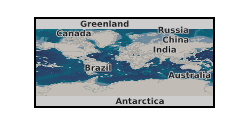
Reconstructed data - This dataset contains the reconstructed image data. Each sub-folder contains a set of 2D slices that together make up a 3D image from that time point. Not all images from all datasets have been reconstructed, the values in parentheses refer to the scan numbers that have been reconstructed. Raw data - This dataset contains the raw unprocessed image data collected during the development of the XRheo system. Processed data - This dataset contains the post-processing outputs from analysis of the data from the XRheo development experiments. Each sub-folder contains the files generated during filtering, segmentation and separation of the features [M (melt), B (bubbles), X (crystals)], and the post processing analysis for size distributions and tracking. The data sets included are the results of dynamic X-ray tomography experiments performed on multiphase synthesised magmas being deformed under known temperature and strain rates for a concentric cylinder geometry.
-
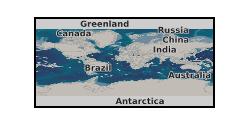
This dataset contains three dimensional synchrotron x-ray tomographic (SRXTM) datasets and analyses of nuclei and nucleoli in embryo-like fossils from the Ediacaran Weng'an Biota. The data accompanies the following paper: Yin Z, Cunningham JA, Vargas K, Bengtson S, Zhu M, Donoghue PCJ. 2017. Nuclei and nucleoli in embryo-like fossils from the Ediacaran Weng'an Biota. Precambrian Research. DOI: 10.1016/j.precamres.2017.08.009 Each .7z archive zip file contains the data relating to a single specimen.
-
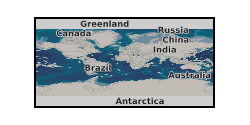
The datasets contains two sets of three dimensional images of Ketton carbonate core of size 5 mm in diameter and 11 mm in length scanned at 7.97µm voxel resolution using Versa XRM-500 X-ray Microscope. The first set includes 3D dataset of dry (reference) Ketton carbonate. The second set includes 3D dataset of reacted Ketton carbonate using hydrochloric acid.
-
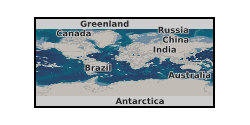
Data has been recorded during triaxial rock deformation experiments where Lanhelin granite samples were subjected to dynamic and half-controlled shear failure. The data consists of mechanical data (load, displacement, confining pressure, strain gauge data), ultrasonic data (AE source locations and arrival times, sensor locations, arrival times of active acoustic surveys), and scanning electron microscope images of the samples after shear failure. Dataset contains all data necessary to evaluate the results presented in the paper entitled: 'Off-fault damage characterisation during and after experimental quasi-static and dynamic rupture in crystal rock from laboratory P-wave tomography and microstructures' by Aben, Brantut, and Mitchell, Journal of Geophysical Research: Solid Earth.
-
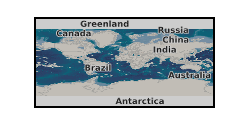
X-ray CT scan dataset of Darley Dale sandstone sample tts6. This sample was deformed in a true triaxial apparatus, and is fully described in the PhD thesis of Stuart (1992, UCL). The sample is a cube, measuring approximately 50 mm on a side. The sample experienced two sets of true triaxial deformation (test DDSS0009 and DDSS0010), with different applied stresses in the 1, 2 and 3 directions. This deformation produced distinct families of brittle microcracks, which were detected using acoustic emissions and seismic velocity analysis. This X-ray CT scan dataset was collected in 2019 at the University of Aberdeen by Dr Stewart Chalmers and Dr Dave Healy.
-
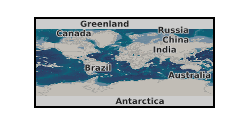
H2 adsorption data on sub-bituminous coal as a function of pressure. Hydrogen flooding of a coal core. Micro CT imaging of the effect on coal swelling after hydrogen injection. Hydrogen is trapped, and no swelling is observed indicating that coal might be a good candidate for the storage of hydrogen.
-

Nanoscopic (50 < size < 150 nm) magnetic particles embedded within the unaltered interior of mineral crystals like zircons (ZrSiO 4 ) make ideal candidates to record the information about the earth's magnetic field (geodynamo). Information regarding the magnitude of the field can be obtained by measuring the natural remnant magnetization (NRM) of these carriers and further information on the approximate size range of the carriers can be obtained by carrying out thermal remnant magnetization measurements (TRM). However very little is known about the actual morphology and spatial distribution of these carriers in order to understand the fundamental parameters influencing paleomagnetic recording. We propose to image pristine zircons crystals with simple geological histories containing large remnant magnetization using ptychotomography in order to investigate the size, shape and spatial distribution of nano-paleomagnetic carriers. This would also give us an opportunity to fine tune the ptychotomographic setup at I13-coherence branch. This data package consists of 3D maps of Bishop Tuff Zircons, relatively young. The folders contain a stack of .tiff files which can be loaded into imagej, dragonfly, aviso for segmentation purposes.
 NERC Data Catalogue Service
NERC Data Catalogue Service